We use cookies to ensure that we give you the best experience on our website. If you continue without changing your settings, we will assume that you are happy to receive all cookies on the Business Car website. However, if you would like to, you can change your cookies at any time

The start point for the best source of fleet information |
Final report: Vauxhall Grandland X long-term test
Date: 07 October 2019 | Author: Sean Keywood
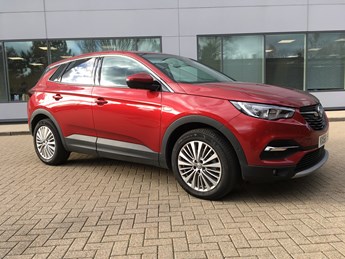
|
|
||||||||||||
Final Report - Head over heart?
After more than six months and over 7,000 miles in our custody, the Vauxhall Grandland X has now left our fleet. To be honest, I'm not really missing it that much, but that doesn't mean it wouldn't be a good choice for your fleet - it just depends what it is you're looking for in a company car.
The truth is, if I was to try to make a list of things that were wrong with our Grandland X, it would be rather short. The interior, for instance, felt solidly put together, nothing broke or even squeaked unexpectedly during our time with it, and the infotainment touchscreen worked well, especially in conjunction with Apple Carplay. The diesel engine had enough 'oomph' for trouble-free motorway use, and although we've fallen short of the official fuel consumption figure you can likely blame Kent's rush hour traffic for that - on long motorway runs it was well up in the 60s. The seats were also comfortable over long distances, and the driver drowsiness alert which encourages regular breaks during such trips will appeal to safety-minded managers. There was plenty of space in the boot, and I liked the ski flap feature in the middle of the rear bench that allows long items to be loaded through without folding a whole seat down (and also, when combined with the power socket in the boot, allows rear seat passengers to set up an accessible snack fridge on road trips). On top of all this, there were no mechanical issues at all to report, meaning that overall it was six months of blissfully trouble free motoring.
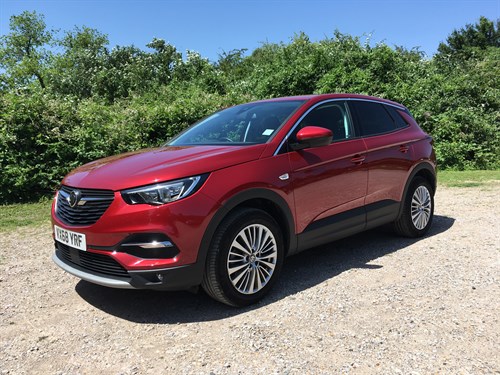
So why then did it leave me cold? Well, perhaps it's not surprising when you consider our car's spec. It's in the Tech Line Nav equipment grade, which Vauxhall has specifically designed with fleets in mind, offering all the kit company car drivers really need - sat-nav, smartphone connectivity, cruise control, climate control, even a reversing camera to help avoid car park dents - at an attractive price point, and indeed it fits that bill absolutely. However, there's nothing at all here that excites - nothing to lift the car into being something more than a business tool. Nothing that makes you want to rush to show it off to your family and friends, or that makes you just look forward to getting inside and going for a drive. OK, this is a family SUV, not a sports car, but that doesn't mean a few design flourishes or neat touches to inject a bit of character were out of the question, and in our Grandland X they were absent. It's a car that does enough in every area except emotional appeal.
We asked when we started this test if Vauxhall at last had a contender in the family SUV segment, and thanks in no small part to the Grandland X's Peugeot 3008 underpinnings, it does. It's not class leading, but its unlikely you would drive it back to back with a rival and be blown away by a massive step up. It's good value too, in this spec undercutting the cheapest 3008 by around £1,500. Where previously Vauxhall SUVs haven't had the best reputation - evident from the unsolicited sympathy from other motoring journalists when I mentioned I was running one - the Grandland X is perfectly fine. But that's all it is. Decent, satisfactory, call it what you will. There's certainly no headline reason to avoid one. But from a driver's point of view, the reasons to bang on the fleet manager's door to get one are also pretty limited. Which brings us back to where we started - it probably comes down to what you're really looking for in the cars on your fleet. If you're just looking for something that's inexpensive, and will tick all the basic boxes that allow your drivers to get on with their jobs without any trouble, it'll do that very well. But if you approach your fleet from a staff retention point of view, and you therefore want to offer a car that doesn't just allow them to get their work done, but also makes them feel happier as they go about it, then you might want to look elsewhere.
6th Report - Park life
You might imagine that having run a long-term test car for several months, it would get harder to find new things to write about. Well it turns out it helps to be a bit unobservant from time to time, since it took me about five months after taking delivery of our Grandland X to realise that it came with an automatic parking system, as part of the optional Park and Go Pack Two.
In my defence, it isn't exactly conspicuous - there is no obvious button on the dashboard to activate it, and when I previously saw the 'park assist' option in the vehicle functions menu I assumed it was to adjust the settings of the car's parking sensors. Having eventually realised my mistake, I found there is the option to have the car park itself in either an end-on bay or a parallel space, or exit the latter. When the system is activated it asks you to drive along slowly while it scans for a suitable space, and when it finds one it prompts you to switch between reverse and forward drive while it steers you into position. With an end-on bay this is quite a slow process that often requires a bit of back and forth manoeuvring, but in a parallel bay it is actually quite swift and the car has no problems backing itself straight into spaces such as the one pictured without any fuss.
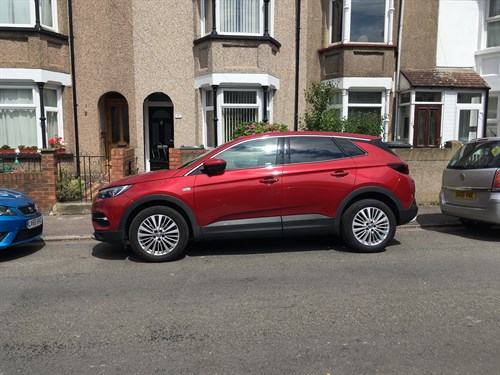
However, while this might be a fun way of showing off to passengers, it is still not as quick as doing the job yourself, and that brings me on to the other reason why I didn't realise for so long that our Grandland X had the system - because it is so easy to park manually. As well as the aforementioned proximity sensors front and rear, it also has a reversing camera (also part of the Park and Go Pack Two), as well as a particularly useful feature that automatically angles the wing mirrors downwards when reverse gear is engaged, making it easy to check that the wheels aren't coming too close to the kerbs - especially helpful with the elevated SUV driving position. Together, this means that while some may appreciate having the automatic option from time to time, I don't have too many regrets about doing the parking myself for so long.
5th Report - Taking a break
For safety-conscious fleet managers, employees potentially driving while tired should be a major concern. According to road safety charity Brake, one in six road crashes resulting in death or serious injury could be fatigue-related. While there are some things managers can do to help combat the issue, they might feel like it is out of their hands once their drivers are out on the road. Therefore, they might be interested to know that our Tech Line Nav-spec Grandland X comes with driver drowsiness alert as standard, comprising a couple of functions to help make sure drivers aren't pushing themselves too far.
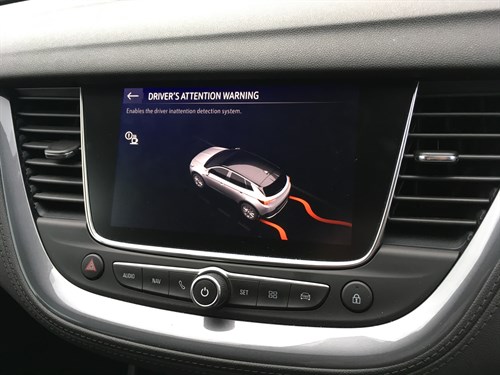
One of these is a timed alert that displays a warning message if the driver has been driving at more than 40mph for two hours non-stop, telling them to take a rest break. This is the regularity of breaks that Brake recommends, and it is especially pertinent since motorways and dual carriageways are the roads where fatigue-related crashes are most likely to happen. If the driver continues then the warning repeats hourly, regardless of if they have slowed down. As someone who regularly undertakes long motorway drives to work events this warning is something I have seen quite often, and having dismissed it as an irritant at first I have to confess it has made me think about my behaviour, and I do now find myself pulling over more regularly to take breaks.
The second function is driver attention warning. This shows an alert to the driver if it detects the car is weaving out of lane in a way that suggests they are tired.
I have only had this activate once, when I was reaching for a pair of sunglasses in the door bin on a quiet stretch of road, but it did at least persuade me to concentrate. If it detects repeated incidents the system scales up the warnings to further encourage the driver to pull over.
Of course, these systems could just be ignored, and it is possible to switch them off, but for fleets with drivers covering long distances they might just be helpful in nudging employees to operate more safely.
4th Report - Into the grey
A friend of mine bought a new car a few months ago, and says that even now just getting back into it after a tough day at the office is enough to lift her spirits. Unfortunately, this is not something I can say about our Grandland X.
It is not that the interior is nasty at all - considering we are testing the cheapest, fleet-focused Tech Line Nav equipment grade the quality of the materials used is perfectly fine. But it does look rather dull. The colours used are a blend of blacks and mostly greys, and even where the designers have tried to inject some interest with swooping plastic trim on the doors and around the central touchscreen this is only finished in a slightly lighter shade than the trim surrounding it, meaning you are left with a grey-on-grey effect that is not likely to be a top fashion trend any time soon.
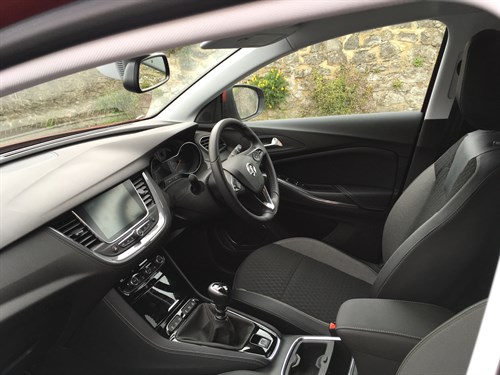
Things get a bit better after dark when tasteful ambient lighting picks out lines on the inside of the doors, but overall it is not exactly an environment to bring much joy to a driver.
At least the aforementioned touchscreen is good. OK, there are no physical shortcut buttons or rotary controls, meaning you have to glance away from the road to operate it, but it is highly responsive to touches, meaning it is very rare you have to press things more than once before it will register (unlike with some other systems). And although the sat-nav it comes with is, disappointingly, far less responsive when it comes to picking up and avoiding traffic jams, standard Apple Carplay and Android Auto connectivity means it is easy to substitute more effective smartphone navigation instead.
3rd Report - Long distance runner
During the first few months I was running our Grandland X, my schedule didn't feature too many of the long-distance motorway runs my cars normally become accustomed to. However, that changed recently, when I had to travel from my home in Kent to Cheshire for a car launch, followed by a trip to visit family in Devon - a total of around 900 miles in five days, mostly at 70mph (although not as much as I would like due to mile-after-mile of 50mph average speed roadworks currently afflicting the M1 and M6). Therefore, I now feel well placed to pass verdict on the Grandland X as a long-distance mile-muncher.
First observation: the 130hp diesel engine was fine, most of the time. I had been worried that having it instead of the range-topping 177hp diesel might leave our Grandland X down on power, but the only effect of this is that when caught behind a lorry or other slow-moving traffic, before pulling out to overtake I often have to change down a gear to get back up to 70mph without delaying cars approaching behind.
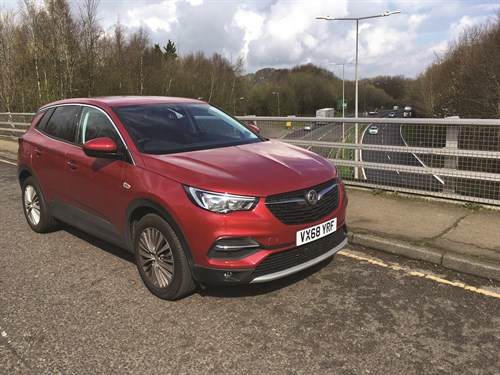
But as long as I remember to do this it is no great hardship, and once at 70 it has enough grunt to sit in top gear all day without any issues. The engine is quiet too, contributing to impresive overall cruising refinement, with a comfortable ride and seats that carried me for hours on end without any aches or pains to report. The only other niggle is the cruise control, which for some reason has an annoying habit of sitting at 69 when it has been set to 70.
Efficiency? Well, I only had to refuel once, with around a tank-and-a-half of diesel used overall, which I greatly appreciated after previously facing frequent trips to the pumps with petrol long-termers. And calculations showed fuel economy of 66.7mpg for the trip - a pretty impressive figure. Put it all together, and for long motorway slogs the Grandland X gets a thumbs up.
2nd Report - On your bike
With recent weeks producing unseasonably warm weather, I imagine I wasn't alone in retrieving my bicycle from its winter hibernation earlier than planned. Unfortunately, there is not much good riding to be had outside my front door, so to get away from the busy town centre to more appealing countryside trails, using the car makes sense. But since I don't have a cycle rack, the bike needs to go in the boot.
Experts advise that when carrying a bicycle in a car you should take at least the front wheel off, but if, like me, the quick-release levers on your 15-year-old bike are in such a bad way they literally can't be refastened without hitting them with a hammer, this isn't really an option. Happily, though, the Grandland X has me covered - fold the back seats down and there is enough room to take the bike with all the wheels in place. It is a quick job too - a couple of buttons drop the back seats easily and they fold flat, making the loading operation itself a doddle. The parcel shelf has to be shifted too, but there is room to store this behind the front seats.
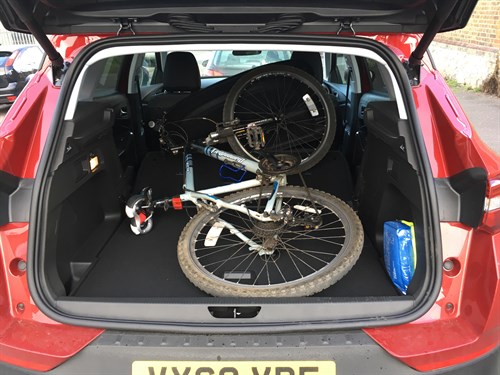
For those whose leisure pursuits are chillier than mine, our Grandland X also comes with a ski flap as part of the standard Versatility Pack, allowing long items to be loaded through the rear centre armrest area without folding down the seats either side (also potentially useful when shopping for things like DIY and gardening supplies).
It is easy to get into the boot as well, thanks to the powered tailgate. It is a feature of modern cars that can divide opinion, with some resenting having to stand and wait while the electric motors do their thing, but for me, the option to blip it open with the key remote while approaching so it is ready to load when I get there is a time-saver that doesn't get old.
The only snag is that while this was standard when our car was ordered, it is now an option bundled with keyless entry and start for £710 in total, which seems a bit steep for the sake of a minor convenience.
1st Report - Ready for work
Some carmakers have had more success than others responding to the SUV boom that has transformed the industry during the past decade or so. For Vauxhall, it has been a bit of a mixed bag. It achieved success with its supermini-sized Mokka X, which has made regular appearances in the UK top ten bestsellers list, but it took a long time to respond properly with the all-conquering Nissan Qashqai when it came to providing a larger vehicle for families.
It eventually addressed this by teaming up with Peugeot - a deal agreed before the two brands became fully united with PSA Group's takeover of Vauxhall - and using the underpinnings of its 3008 to create the Grandland X (the smaller 2008 and Crossland X are similarly related). Now, we are running one for six months to see whether, for company car drivers, it is a case of 'worth the wait' or 'too little too late'.
I am particularly interested to run the Grandland X having reviewed the model for Business Car when it was launched. Commenting on the model I drove then, I was impressed by its gutsy 2.0-litre, 177hp diesel engine, but felt that at nearly £34,000 the asking price of the range-topping Ultimate equipment grade was far too high. With that in mind, looking at the spec of our car, there is good news and bad news. The positive is that in Tech Line Nav grade - a fleet-focused spec that is actually cheaper to buy than the entry-level SE, but with extra equipment at the expense of offers aimed at private buyers - the cost before options of this car is far more reasonable at less than £25k. On the negative side, instead of the 177hp engine, this car has a 1.5-litre 130hp diesel. This engine joined the range a few months ago, replacing a 120hp unit I had also previously driven and found a bit sluggish, so I'm hoping at least for an improvement on that score. The obvious appeal of the 1.5-litre over the 2.0-litre should be in running costs, and indeed its official combined fuel economy and CO2 emissions figures are better by 9.6mpg and 18g/km respectively, the latter meaning the smaller-engined car sits three BIK bands lower. I will be interested to see how close I can get to that economy figure, and whether drivers may resent sacrificing the power of the larger motor to pursue those savings. With long motorway slogs to car launches and fleet industry events an ever-present part of life on the Business Car fleet, there'll be no hiding place for the Grandland X on that score.
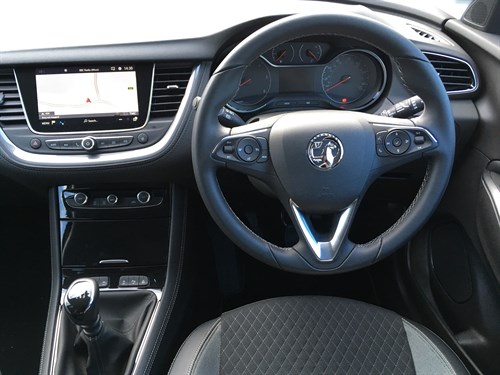
If that reads like a forbidding assessment, rest assured that a glance at our car's spec sheet reveals cause for optimism. In line with the Tech Line Nav grade's company car aspirations, there is all the standard kit that a business driver could reasonably expect, including climate control, cruise control, and an 8in touchscreen with sat-nav and smartphone connectivity. Any fears about manoeuvring an SUV (especially after the Mini I ran previously) are assuaged by front and rear parking sensors and a reversing camera (the latter fitted with the Park and Go Pack Two, the only cost option on our Grandland X besides metallic paint). Safety systems include autonomous emergency braking, driver drowsiness alert, lane assist, lane departure warning, and a personal favourite, blind spot alert, which I always find especially useful when driving home from the office on busy, gloomy motorways. Other impressive features at first glance include the spacious 514-litre boot, with neat electronic tailgate, and the interior trim, which includes a good amount of leather and other soft-touch materials, despite the Tech Line Nav's low price point. On the minus side, I haven't been immediately wowed by the exterior styling - it looks a little dumpy to me, putting me almost as much in mind of an MPV as a rough-and-tumble off-roader.
And on that last note, one thing the Grandland X probably won't be offering is any special aptitude for inclement weather. Of course it's not unusual for crossover SUVs of this type to do without four-wheel drive, but our car also comes without Intelligrip, the multi-surface traction control system Vauxhall offers as a substitute. Having taken delivery in the depths of winter, I'm hoping this isn't an omission I might come to regret.











